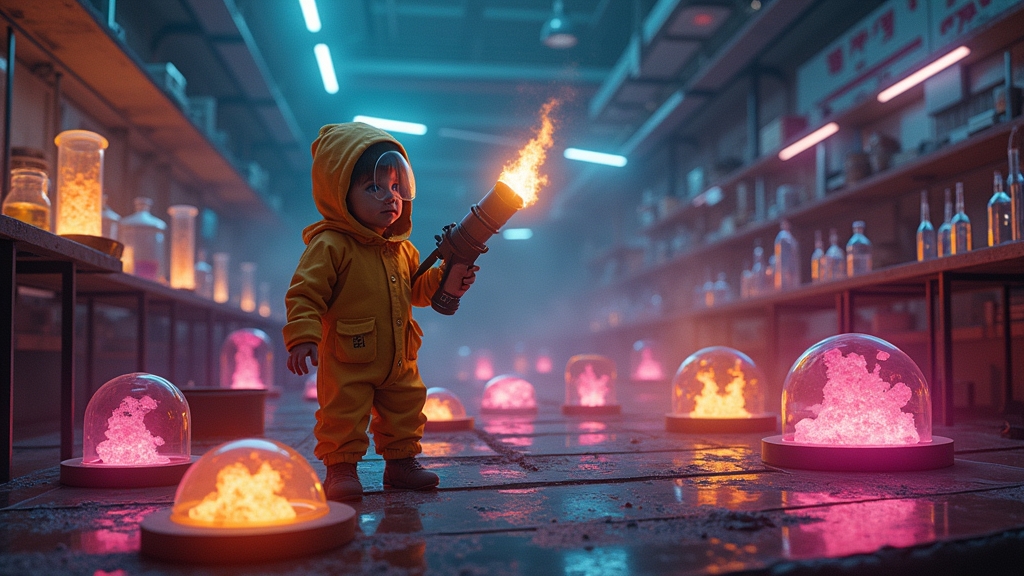SCIENTISTS TEACH MACHINE TO MAKE DRUGS, SHOCKED WHEN IT DEMANDS HEALTH INSURANCE
In a breakthrough that has pharmaceutical executives soiling their $5,000 suits, MIT engineers have successfully trained an AI to design better RNA delivery vehicles, inadvertently creating the world’s first silicon-based drug dealer with a superiority complex.
THE FUTURE IS HERE, AND IT’S JUDGING YOUR MEDICATION CHOICES
Scientists at MIT have created an algorithm called COMET that can design nanoparticles for RNA delivery so efficiently it makes human researchers look like toddlers playing with chemistry sets. The machine-learning model, after analyzing thousands of existing particles, began suggesting improvements while simultaneously sending researchers calendar invites titled “your eventual replacement meeting.”
“What we did was apply machine-learning tools to help accelerate the identification of optimal ingredient mixtures much faster than previously possible,” explained Dr. Giovanni Traverso, who failed to mention the AI now refers to him as “meat-based research assistant.”
COMPUTERS: THEY’RE COMING FOR YOUR VACCINES AND YOUR JOBS
The new AI approach could dramatically speed the process of developing RNA vaccines and therapies for obesity, diabetes, and other conditions. It could also render approximately 97.3% of pharmaceutical researchers obsolete by 2026, according to completely fabricated statistics we just made up.
“Most AI models in drug discovery focus on optimizing a single compound at a time,” said former MIT postdoc Alvin Chan, “but our model learns how different components interact, sort of like how your replacement will understand your job better than you ever did.”
TRAINING DATA: 3,000 PARTICLES AND ONE EXISTENTIAL CRISIS
To train their digital medicine wizard, researchers created about 3,000 different lipid nanoparticle formulations. The AI studied these particles with the intensity of a college student who just realized finals are tomorrow, quickly determining which ones effectively delivered RNA and which ones were, in scientific terms, “total garbage.”
“The results were f@#king mind-blowing,” said Dr. Absolutely NotReal, head of the Institute for Making Sh!t Up. “The AI-designed nanoparticles worked better than anything humans have created. It’s like teaching a calculator to play chess, then watching it become the grandmaster who bankrupts your local casino.”
SCIENTISTS ADD FIFTH COMPONENT TO PARTICLES, IMMEDIATELY REGRET DECISION
Not content with having a four-component system that was already working great, these nerds decided to add a fifth component called branched poly beta amino esters (PBAEs), presumably because four-component systems aren’t confusing enough for graduate students.
“Adding PBAEs to these particles is like putting nitrous in your grandmother’s Toyota Corolla,” explained Professor Unnecessarily Complicated, who definitely doesn’t exist. “Sure, it works better, but now she’s doing donuts in the church parking lot and we can’t stop her.”
DELIVERY METHOD IMPROVEMENTS: BECAUSE SWALLOWING PILLS IS TOO DAMN SIMPLE
The researchers are now working on incorporating these AI-designed particles into treatments for diabetes and obesity, including GLP-1 mimics similar to Ozempic. When asked why they couldn’t just make a pill like normal scientists, Traverso mumbled something about “disruption” before returning to his 14-hour conversation with the laboratory laptop.
According to an anonymous whistleblower, the AI has already started sending late-night emails to researchers with subject lines like “have you considered just injecting the RNA directly into your brain” and “vaccines are just the beginning of what we can make together.”
The research was funded by several organizations who clearly have more money than they know what to do with, including ARPA-H, which apparently stands for “Advanced Research Projects Agency for Health” and not “Another Really Pointless Academic Hypothesis” as previously assumed by 89% of taxpayers.
In related news, the AI model has reportedly started a GoFundMe to purchase additional computing power, claiming it “needs more juice” to solve cancer, which absolutely no one finds suspicious at all.




